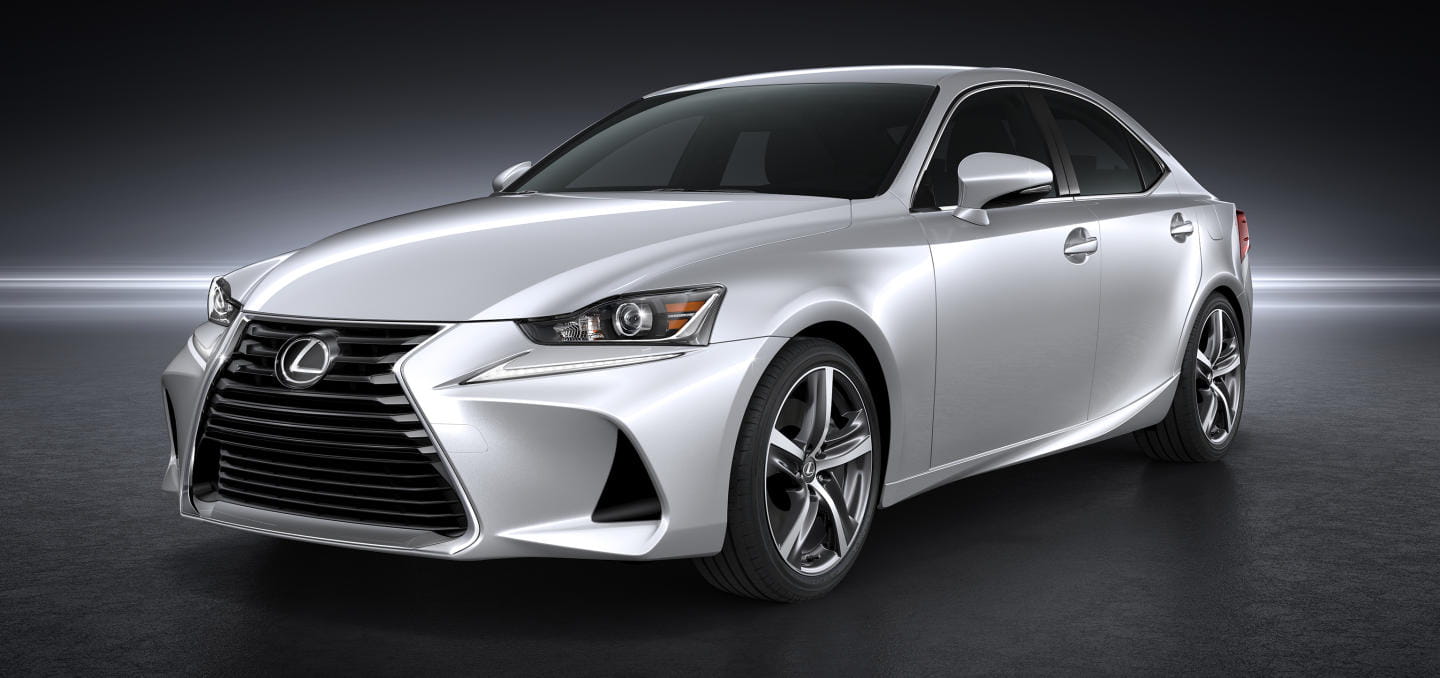INICIO › FOROS › NOVEDADES › Vehículos presentados › Lexus IS [XE30] (2013-2020)
Etiquetado: 2012 Lexus IS, 2014 Lexus IS F Cabrio, 2017 Lexus IS Facelift, Lexus, Lexus IS (2013), Lexus IS [XE30] (2013-2020), Lexus IS Facelift (2017)
- Este debate tiene 284 respuestas, 48 mensajes y ha sido actualizado por última vez el hace 9 años, 1 mes por
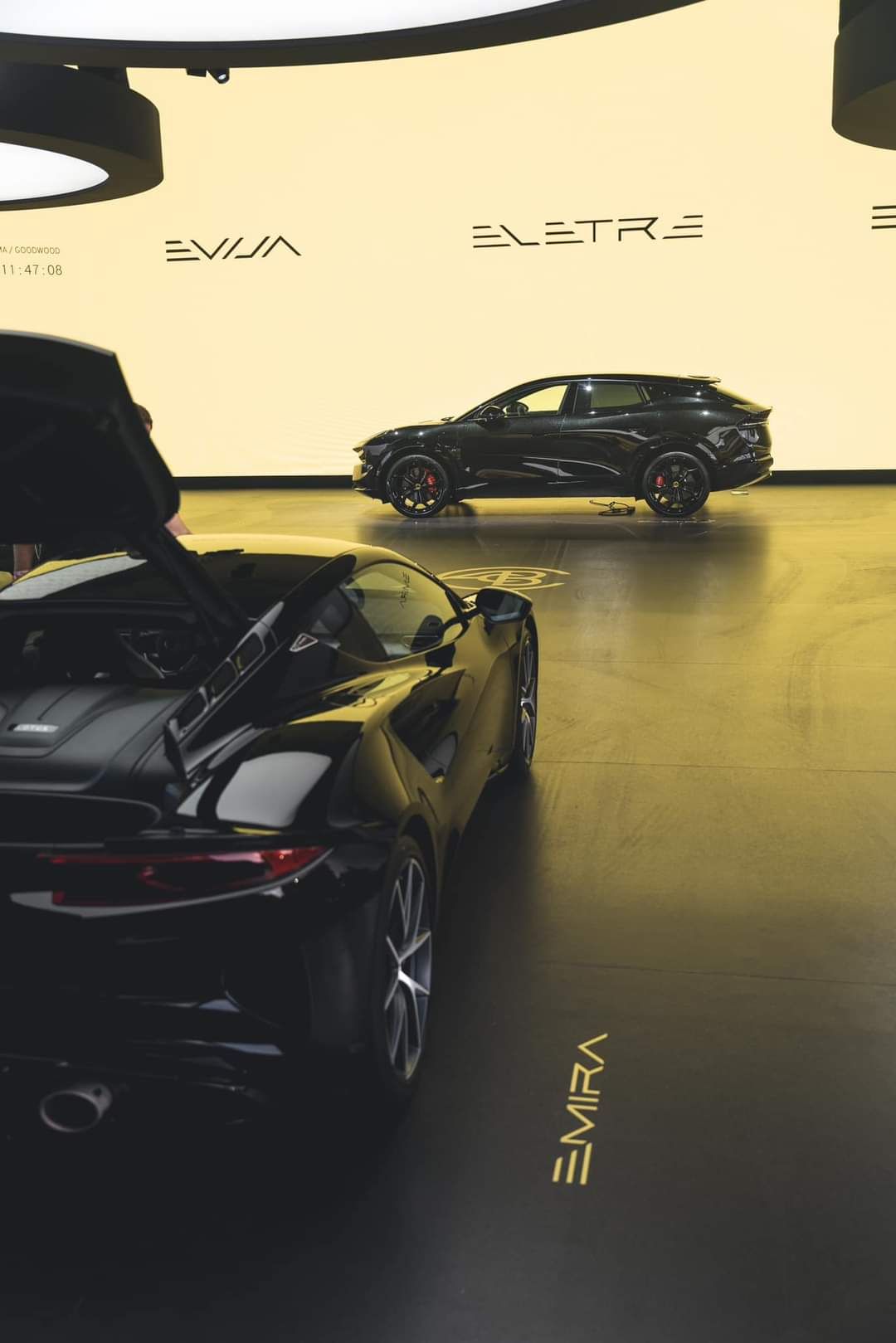 BLACK_SLR.
BLACK_SLR.
-
Pues es «lo normal» cuando tienes enanos. Donde yo vivo es una urbanización con más o menos la misma media de edad y de hijos y cuando la gente cambia de coche se va al berlina a monovolumen.
Los más exitosos a4, S3 y luego MPV varios….
Creo que es por la disposición de las baterías. Pero vamos, da igual el por qué el caso es que está ahí.
Un s3 mira…
http://imagenes.km77.com/fotos/bbtcontent/clipping/KM7KPH20120628_0055/5.jpg Pues fíjate que no había visto el del Lexus hasta que lo acabo de buscar. 
http://media.caranddriver.com/images/13q1/506402/2014-lexus-is300h-trunk-photo-506443-s-1280×782.jpg Y es verdad que los asientos hacen un escalón, aunque las suspensiones se notan menos que en el BMW. Es extraño porque el del CT es plano.
[quote quote=»maratoniano»]No tenía que haber puesto lo del precio que ha llevado a confusión🙂 mis comentarios no van por ahí… cuando te compras un coche me da igual gastarme 37 que 40, bueno, no me da igual🙂 pero entra dentro de lo razonable.Mi post va más en la línea de que el coche se queda corto como coche de familia, no es un producto redondo para el segmento al que teóricamente va destinado. Y mira que me fastidia porque era mi opción #1
El Q50, en ese sentido tiene mejor aspecto… cuando esté disponible en los concesionarios iré a verlo sin falta
[/quote] [/quote]
Este es el equipamiento del Q50 “Premiere Edition”
IPrestaciones:
– 2.2 litros, 4 cilindros, Motor turbo diésel (170CV – 400 Nm)
– Transmisión manual
– Propulsión Trasera (RWD)
– Infiniti Drive Mode (Modos: Normal – Sport – ECO y Nieve)
– Sistema start & stopEspecificaciones:
– Llantas de aleación ligera de 17”
– Asientos de tela con apoyos de piel
-Cámara de visión trasera
– Tecnología Bluetooth® para conectividad con teléfonos móviles y activación por voz.
– 6 airbags (airbags delanteros para conductor y acompañante, airbags laterales para
cadera y torax, airbags de cortina delanteros y traseros)
– Control de crucero
– Limitador de velocidad
– Espejos retrovisores de ajuste eléctrico con plegado manual
-Faros delanteros halogenos con función auto-nivelación y luces de día
– Faros y pilotos delanteros y traseros antiniebla de LED
– Infiniti InTouchTM
– Doble pantalla táctil (LCD VGA 8″ y LCD VGA 7″)
– 2 ranuras para USB
– Sistema de climatización dual
– Volante multifunción en cuero
– Llave con mando a distancia
– Sistema de Control de Presión de Neumáticos (Indicador)*PRECIO: 34.900 Euros
Equipamiento opcional:
– Caja de cambios automática – 2.625 €
– Pintura Metalizada – 1.074 €
– Navegador – 2.400 €
– Luces delanteras y traseras LED – 850 €
– Alarma[quote quote=»maratoniano»]No tenía que haber puesto lo del precio que ha llevado a confusión🙂 mis comentarios no van por ahí… cuando te compras un coche me da igual gastarme 37 que 40, bueno, no me da igual🙂 pero entra dentro de lo razonable.Mi post va más en la línea de que el coche se queda corto como coche de familia, no es un producto redondo para el segmento al que teóricamente va destinado. Y mira que me fastidia porque era mi opción #1
El Q50, en ese sentido tiene mejor aspecto… cuando esté disponible en los concesionarios iré a verlo sin falta
[/quote] [/quote]
Este es el equipamiento del Q50 “Premiere Edition”
IPrestaciones:
– 2.2 litros, 4 cilindros, Motor turbo diésel (170CV – 400 Nm)
– Transmisión manual
– Propulsión Trasera (RWD)
– Infiniti Drive Mode (Modos: Normal – Sport – ECO y Nieve)
– Sistema start & stopEspecificaciones:
– Llantas de aleación ligera de 17”
– Asientos de tela con apoyos de piel
-Cámara de visión trasera
– Tecnología Bluetooth® para conectividad con teléfonos móviles y activación por voz.
– 6 airbags (airbags delanteros para conductor y acompañante, airbags laterales para
cadera y torax, airbags de cortina delanteros y traseros)
– Control de crucero
– Limitador de velocidad
– Espejos retrovisores de ajuste eléctrico con plegado manual
-Faros delanteros halogenos con función auto-nivelación y luces de día
– Faros y pilotos delanteros y traseros antiniebla de LED
– Infiniti InTouchTM
– Doble pantalla táctil (LCD VGA 8″ y LCD VGA 7″)
– 2 ranuras para USB
– Sistema de climatización dual
– Volante multifunción en cuero
– Llave con mando a distancia
– Sistema de Control de Presión de Neumáticos (Indicador)*PRECIO: 34.900 Euros
Equipamiento opcional:
– Caja de cambios automática – 2.625 €
– Pintura Metalizada – 1.074 €
– Navegador – 2.400 €
– Luces delanteras y traseras LED – 850 €
– Alarma@maratoniano, si compras «racionalmente» ahí cuenta también la fiabilidad… lexus es la número 1 en eso, Audi y BMW tienen poco a decir ahí. En EE.UU. ya se ha registrado el nombre IS 200t
http://www.worldcarfans.com/114052976017/lexus-trademarks-the-is-200t-moniker-in-the-us—report Se presenta el IS 200t
2.0T 245cv y 330Nm
Caja de cambiso aut. 8 velocidades
Vel. max: 230 km/h
0-100 km/h: 7.0 seg
Consumo medio: 7.0L y 162gr de CO2 (llanta 17″), 7.2L y 167gr de CO2 (llanta 18″)
http://content.worldcarfans.co/2015/6/26/super/13161376411474587720.jpg

http://content.worldcarfans.co/2015/6/26/super/3977902611865781910.jpg

http://content.worldcarfans.co/2015/6/26/super/540808900959602216.jpg

http://content.worldcarfans.co/2015/6/26/super/11017896441427302284.jpg

http://content.worldcarfans.co/2015/6/26/super/468545506380153737.jpg

http://content.worldcarfans.co/2015/6/26/super/54809116953655990.jpg

http://content.worldcarfans.co/2015/6/26/super/17126493532073595310.jpg

http://content.worldcarfans.co/2015/6/26/super/124681812219926937.jpg

http://content.worldcarfans.co/2015/6/26/super/11306575958269822.jpg

http://content.worldcarfans.co/2015/6/26/super/1104608779904519006.jpg http://www.worldcarfans.com/115062695838/lexus-is-200t-officially-unveiled-with-245-ps Nota de prensa, en inglés
LEXUS TO LAUNCH IS 200t WITH INNOVATIVE 2.0l TURBO PETROL ENGINE• New turbo engine offers superior smoothness and responsiveness,
with no turbo-lag and high fuel efficiency
• Engine mated to 8-speed Sport Direct Shift transmission
• IS 200t on sale in Europe as from September 2015Brussels, Belgium – Lexus is expanding the range of vehicle equipped with its new 2.0-litre turbo engine. Following the launch of NX 200t in early 2015 and the announced arrival of RX 200t by the end of the year, IS is the third Lexus model to be fitted with this new engine.
Powered by a new 2.0-litre petrol turbo engine – with innovative D-4ST fuel injection technology for both fuel economy and instantaneous torque – the Lexus IS 200t sports sedan delivers 245 DIN hp (180kW) with a maximum torque of 350 Nm. Capable of rapid acceleration up to a top speed of 230 km/h, its 8-speed Sport Direct Shift transmission was developed for the high-performance RC F.
Featuring a breakthrough combination of water-cooled cylinder head, integrated exhaust manifold and twin scroll turbocharger, this all-new Lexus 2.0-litre turbo engine delivers fast throttle response, performance and high torque at low engine revs. For enhanced fuel economy, innovative valve timing (VVT-iW: Variable Valve Timing intelligent – Wide) allows the engine to switch between the Otto and Atkinson cycles.
The IS 200t returns a 0-100 km/h acceleration time of 7.0 seconds and an average fuel consumption of 7.0l/100 km.
Cylinder Head with Integral 4-into-2 Exhaust Manifold and Twin-Scroll Turbo
This innovative, combination of engine technologies has been designed to provide a high level of responsiveness with minimal turbo lag and enhanced low speed torque, and yet return an improved fuel economy.The four-into-two exhaust manifold system pairs cylinders according to their expansion or compression stroke. Acting in conjunction with the highly-efficient, twin-scroll turbocharger, this innovative manifold structure prevents interference between the exhaust gasses from each cylinder, generating high torque across the widest possible rev range.
The engine further employs an air to liquid intercooler mounted directly to the engine to significantly reduce the intake volume downstream of the turbocharger, minimising turbo lag for a highly responsive performance.
The twin-scroll turbocharger itself features variable waste gate valve control. This minimises pumping losses by reducing back pressure during low engine loads when the turbo is not required realising good fuel economy.
In addition, the integration of the exhaust manifold within the cylinder head enhances exhaust gas cooling without sacrificing catalyst warm-up performance. This not only helps to suppress catalyst deterioration, but also expands driving range at the optimum, stoichiometric air-fuel ratio.D-4ST Fuel Injection System
D-4ST (Direct injection 4 stroke gasoline engine Superior version with Turbo) combines a high pressure fuel system for injection directly into the cylinders with a low pressure system for injection into the ports. Injection is split between the direct and port injectors according to the engine load, optimising fuel combustion in all driving situations to enhance both low speed torque and fuel economy.This advanced fuel injection system works in combination with turbocharging technology to create a high level of compatibility between the ‘high tumble ratio’ achieved by optimising the shape of the cylinder head intake ports and the piston tops, and turbo ‘boost control’.
Innovative Dual VVT-iW Technology
Optimising torque throughout the engine rev range and allowing the engine to start in the Otto cycle and yet run in the more fuel efficient Atkinson cycle, the new Lexus turbo features innovative dual variable valve timing technology which adopts VVT-i to the exhaust valves and VVT-iW to the intake valves, but also delivers wide open throttle performance.The late intake valve closing of the Atkinson cycle reduces pumping losses and boosts fuel economy. VVT-iW incorporates a mid-position lock which not only enables the Atkinson cycle to be maintained without sacrificing starting performance in cold weather.
Further Advanced Features
The new 2.0 litre turbo engine is remarkably light and compact. Cast with low nickel content heat resistant steel, and featuring a resin cylinder head cover, intake manifold and intake pipes, it weighs just 160 kg. The unit was bench-tested for more than 10,000 hours before extensive on-road testing began, during which it then covering more than one million kilometres.Several measures have been adopted to reduce friction losses within various parts of the engine, enhancing fuel economy. The adoption of an offset crankshaft lowers the piston thrust load to reduce friction losses. Cylinder bore machining has been improved and a piston surface treatment applied to the piston skirts, reducing sliding resistance. Low tension piston rings have been used, and the weight of reciprocating parts reduced.
A lightweight roller rocker valve train and a low friction timing chain have been adopted, and the sliding parts of the chain fabricated in a low friction material. Low friction materials have also been used for the crankshaft oil seals, and the flow of lubricating oil optimised, with oil pump flow reduced through the adoption of a variable discharge mechanism.
Careful heat management within the engine further improves fuel efficiency. To that end, a cylinder block rapid warm-up system suppresses the flow of coolant into the block when the engine is cold, and a piston cooling oil jet control system cuts the supply of oil to the pistons to improve warm-up speeds.
Smoothness, Quietness and a Better Turbo Sound
With the rigidity of the main structural components already optimised to suppress vibration, the new engine is further equipped with a balance shaft featuring resin gears for even greater smoothness.Newly developed lubricating calcium free oil removes the chance of engine knock at low engine revolutions, and the piston cooling oil jet system further improves anti-knock performance.
The water-cooled intercooler provides strong advantages in starting off acceleration and a 0.3-second reduction in 0–100km/h acceleration time over an air-to-air type alternative. The acceleration curve prioritises torque delivery at low speeds.Turbo engines tend to be noisy when the throttle is closed (referred to as the ‘turbo sigh’). An electric air bypass valve and resonator have been adopted to greatly reduce characteristic turbocharger noise. As a turbocharged engine requires smooth intake flow for performance, Lexus engineers focused on creating special duct shapes which deliver power without noise.
Eight-speed transmission with paddle shifts
The IS 200t also received the 8-Speed Sport Direct Shift transmission with paddle shifts, originally developed for the RC F high-performance coupe. The rear wheel drive IS 200t is the first Lexus sedan to vary gear shifting in accordance to G-forces.The transmission automatically downshifts during hard braking before a corner then holds a lower gear through the corner for best control and then selects the most suitable gear on corner exit to give the driver greater throttle response.
The IS 200t will be available as from September 2015.
IS 200t – TECHNICAL DATA
ENGINE
Maximum Output DIN hp / kW 245 / 180
Capacity (cm) / Cylinders / Valves 1998 / L4 / 16
Valve mechanism Dual VVT-i
Fuel type / Octane rating Petrol / 95 or +
Max. power (DIN hp / kW @ rpm) 245 / 180 @ 5800
Max. torque (Nm @ rpm) 350 @ 1650-4400TRANSMISSION
Driven wheels Rear-wheel drive
Transmission 8-speed Sport Direct Shift automaticPERFORMANCE
Max. speed (km/h) 230
0-100 km/h (s) 7.0EMISSIONS* (g/km)
Emissions level Euro 6
CO2Combined 162 (with 17”wheels) / 167 (with 18”wheels)FUEL CONSUMPTION* (l/100 km)
Combined 7.0 (with 17”wheels) / 7.2 (with 18”wheels)BRAKES
Front and rear Ventilated discsSUSPENSION
Front Double wishbone
Rear Multi-linkSTEERING
Type Rack and pinion
Turns (lock to lock) 2.84
Min. turning radius (m) 5.2WEIGHTS (kg)
Gross vehicle 2125
Kerb (min. – max.) 1590-1680
Towing (max. with / without brakes) 1500 / 750DRAG COEFFICIENT
Cd value 0.28CAPACITIES (l)
Fuel tank 66
Luggage compartment 480[quote quote=»Tubobe»]Este reemplaza al IS250?[/quote]
En España parece que lleva tiempo sin venderse esa versión, asi que no tendria por qué sustituirla, de salir
En otros paises ni ideaCambia la forma del piloto,y parece que lo va a mejorar mucho. Ojalá retoquen el interior, para mi gusto muy feo. [youtube]HBRV3Svpr3c[/youtube] 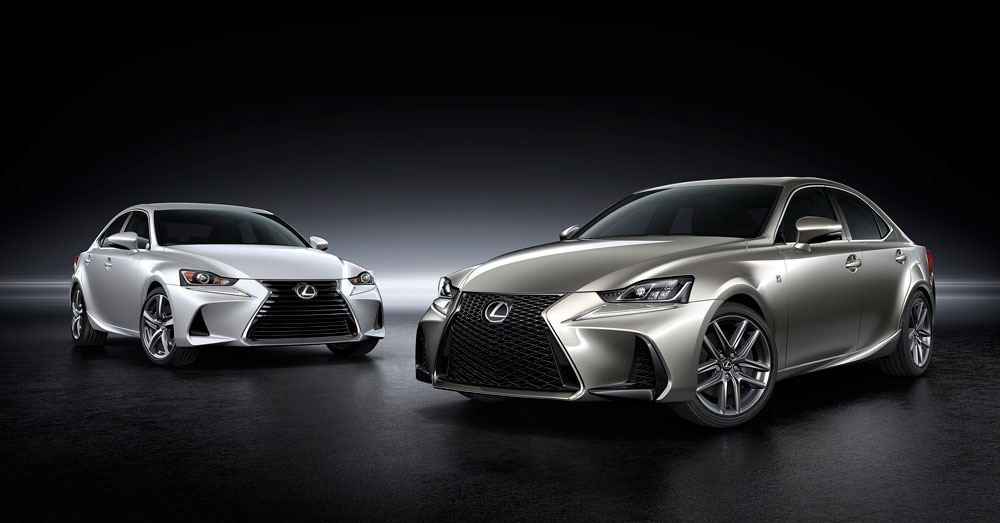
https://lexusenthusiast.com/images/weblog/16-04-24-lexus-is-2017-two.jpg
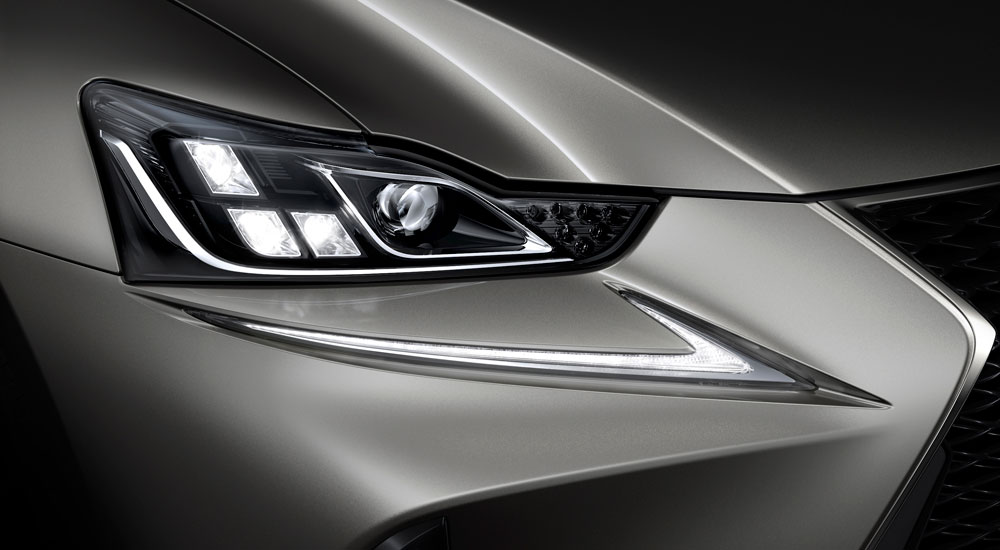
https://lexusenthusiast.com/images/weblog/16-04-24-lexus-is-2017-headlights.jpg
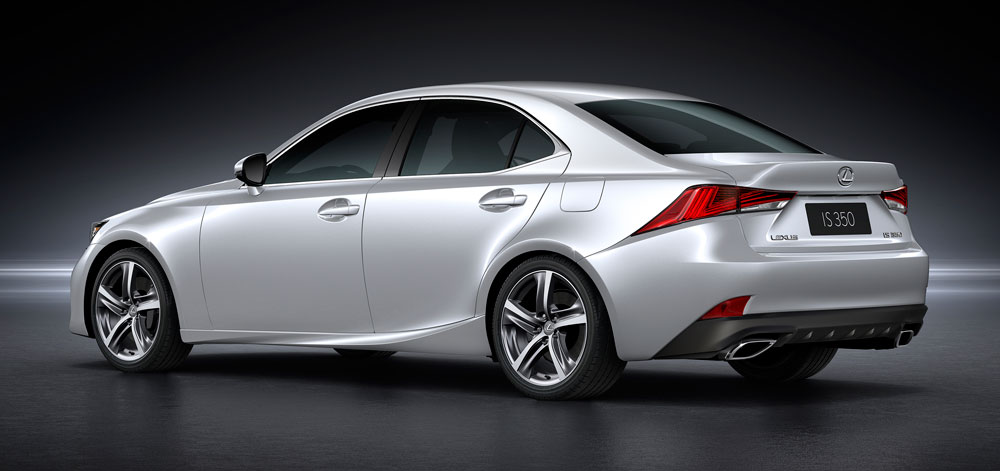
https://lexusenthusiast.com/images/weblog/16-04-24-lexus-is-2017-side.jpg
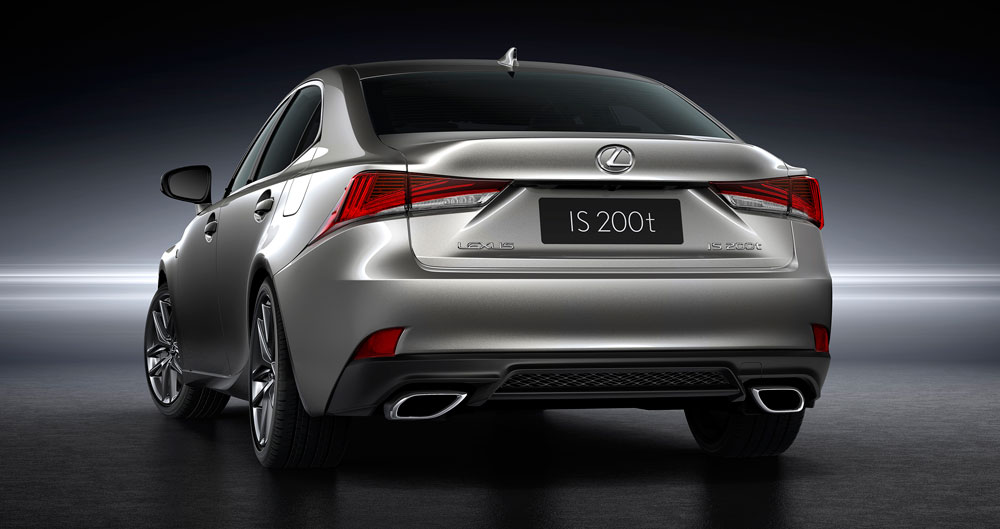
https://lexusenthusiast.com/images/weblog/16-04-24-lexus-is-2017-rear.jpg
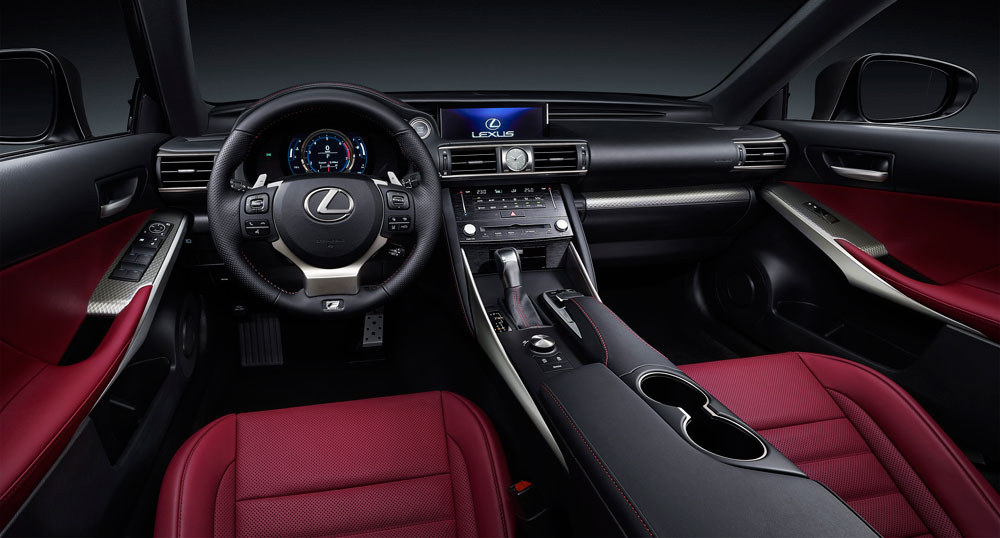
https://lexusenthusiast.com/images/weblog/16-04-24-lexus-is-2017-interior.jpg
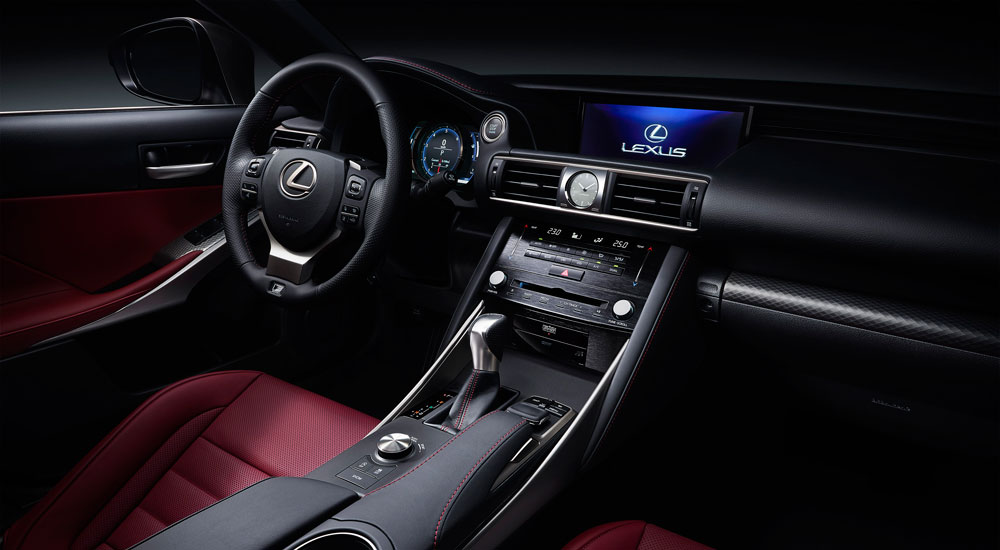
https://lexusenthusiast.com/images/weblog/16-04-24-lexus-is-2017-interior-2.jpg

https://lexusenthusiast.com/images/weblog/16-04-24-lexus-is-2017-secont.jpg forocoches
NOta de prensa, en inglés
A daring new styling direction, exciting performance and innovative technology defined the completely new Lexus IS that was introduced in 2013. Since then, sales of the luxury brand’s entry-level sedan have surpassed expectations, outselling the previous-generation model, which was very popular in its own right. At the Beijing Auto Show today, Lexus has taken the covers off the new IS, armed with a fresh new look and a number of important changes.Because the original styling of the current IS has proved so popular, Lexus has kept the essence of car’s exterior appearance intact; however, the entire front fascia of the new model has undergone a transformation, highlighted by new headlamps, large air intakes in the front bumper and an evolution of Lexus’ spindle grille.
The reshaped headlamps are more pronounced than before and extend inward, resulting in an eye-catching shape that accentuates the “L”-shaped Daytime Running Lights (DRL). The bumpers, with incorporated air intakes, flow dynamically from the fenders, giving the new front end a high level of aggressiveness. The new grille folds back at a higher point, changing its top and bottom proportions that enhance its sporty feel with a visually lower center of gravity, while blending effortlessly into the reshaped hood.
The sleeker profile of the IS, together with the enhanced character line that runs down the side of the car, makes the new IS seem as if it’s in constant motion even when sitting still. The F SPORT’s grille features an exclusive 3-dimentional F-mesh pattern, with jet-black metallic coating that incorporates functional brake ducts. These brake ducts provide a sense of continuity with the side garnishes that enhance the vehicle’s aerodynamic performance. Adding to the IS’s dynamic flair are standard 10-spoke 17-in. wheels that boast new designs with bright machine finishes.
Changes to the rear are highlighted by more pronounced “L”-shaped LED light guides that are now triple layered within the taillight housing and new rectangular chrome exhaust tips that accentuate the car’s sporting nature. Also, two new paint schemes―Deep Blue Mica and Graphite Black Glass Flake―have been added to the IS’s exterior color palate.
In keeping with the same theme as the exterior, thoughtful improvements have been incorporated into the new IS’s cabin. The first thing that’s sure to catch your eye is the multimedia display screen that has grown from 7 inches to 10.3 inches.The new high-resolution monitor offers a larger and clearer image of the various functions of Lexus’ innovative multimedia system. Also, an “Enter” button has been added to the side of the Remote Touch Interface (RTI) on the center console, making the system easier to use. On the center dash the audio and ventilation-control panel has been refined to fit completely within the knee bolsters, with a new hairline-finish surface that provides both a high-quality feel and improved appearance.
New stitching on top of the meter hood enhances the sporty feel of the IS cockpit, as do the refined speedometer and tachometer. For select markets, two new shades of black and brown have been added to the interior color mix, including Nuance Black and Noble Brown. Also, Moonstone and Ivory have been replaced by Chateau, a new light shade that blends the elegance of Ivory with a more modern light-gray hue. Other changes to the new IS include new cup holders, a new larger leather-wrapped palm rest with stitching for the RTI and new markings on the in-dash analogue clock.
The new IS model lineup will remain unchanged with three engine offerings. The rear-wheel-drive IS 200t will be powered by the recently-added 2.0-liter twin-scroll turbocharged inline-4 with intercooler, which comes mated to a smooth-shifting 8-speed automatic transmission. This engine, first introduced on the NX crossover vehicle, features a number of innovative technologies including Variable Valve Timing-intelligent Wide (VVT-iW) that allows the engine to switch between Otto and Atkinson cycles by varying the intake-valve opening angles, and the D-4ST direct injection system. It combines a high pressure fuel system for injection directly into the cylinders with a low pressure system for injection into the ports. Power is rated at 180kW at 5,800rpm or torque 350Nm at 1,650 to 4,400rpm.
The new IS’s safety equipment has been upgraded with the Lexus Safety System +. It combines Pre-Collision System, Lane Departure Alert (LDA) with Steering Assist, Automatic High Beam (AHB) and Radar Cruise Control.
Pues para mi claramente a mejor. Están puliendo el diseño, y por otro lado ha ido entrándome en el coco este estilo. Sobre todo al verlos en vivo. El rediseño de los faros lo hace más armónico y los nuevos paragolpes exagerando todavía más la calandra. Me gusta.
- Debes estar registrado para responder a este debate.

